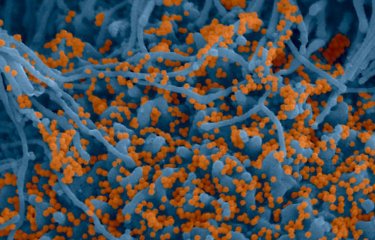-
Document de presse | 2017.02.27
Infravec2 project launch: A European Commission 10M€ effort to fight mosquito-transmitted diseases
On February 14, the European Commission officially approved the Infravec2 project . This project will improve the European large-scale facilities (infrastructures) for research on mosquitoes and other insects (vectors) that carry human and animal diseases, and will promote sharing of the facilities by European researchers. The Infravec2 project is funded by the Commission’s Horizon 2020...
-
Report | 2017.03.01
Repairing the brain
From completely artificial hearts to bionic eyes, recent progress in science has ushered in a new era for medicine. But how does the brain fit into this? The brain is a much less mechanical organ than the heart; it is the hub of our consciousness, a mental process that is not easy to reproduce artificially. But although the workings of the brain are still shrouded in mystery, scientists are now...
-
Article | 2017.03.03
The Pasteur Culture Collection of Cyanobacteria (PCC)
The Pasteur Culture collection of Cyanobacteria (PCC) is supported by the Institut Pasteur, which has provided the space and facilities for the PCC since 1971.The PCC is also a member of the CRBIP since April 2006.Since 2009, the PCC belongs to the Laboratory Collection of Cyanobacteria in the Department of Microbiology. The laboratory maintains these axenic strains of Cyanobacteria, takes care...
-
Article | 2017.03.03
PCC
General informationsIn ordering a strain from the PCC, the customer implicitly agrees not to resell the strain, and to quote the Collection acronym (PCC) and full strain number (e.g. 6301) in any published communication involving that strain.Strains obtained from the PCC should not be donated to other laboratories or Culture Collections. This precaution is necessary to protect the reputation of...
-
Article | 2017.03.03
Frequently Asked Questions (FAQ)
What is the role of a biological resource Centre?A Biological Resource Centre holds collections of biological material and the information associated with them, to facilitate access to this material for sustainable use.What are the interests of a Biological Resource centre?• They increase the number of microbial strains available to the scientific community and to industry and they preserve...
-
Article | 2017.03.03
Useful links CRBIP
AFAQ (Association française d'Assurance Qualité)BWC (Biological Weapons Convention)CABRI (Common Access to Biological Resources and Information)CBD (Convention on Biological Diversity)EBRCN (European Biological Resource Centres Network)ECCO (European Culture Collections' Organisation)FAO (Food and Agriculture Organization)GBIF (Global Biodiversity Information Facility)IATA (International...
-
Article | 2017.03.03
Contentment investigation
Dear Client (s),You purchased a biological material from the "Centre de Ressources Biologiques de l’Institut Pasteur" and we thank you for it.So many thanks to take a while and fill in this questionnary (This content is only available in French)
-
Document de presse | 2017.02.24
Link between a virus and sexual reproduction on Earth
By formally identifying the main player in the fusion between male and female sex cells, researchers from the Institut Pasteur, the CNRS and Paris Descartes University, together with American and German teams, have revealed the probable viral origin of this fusion process, which is common to a vast number of living organisms on Earth. In addition, the study provides new lines of research for...
-
Article | 2017.03.09
Persistent Viral Infections and Immune evasion
SummaryThis course is located at the intersection between virology and immunology. The aim of the course is to educate graduates and post-graduates with understanding and expertise in virology, with a particular focus on persistent viruses and the mechanisms by which viruses escape from the immune system. This specific theoretical knowledge will provide students with the critical judgement and...
-
Article | 2017.03.16
Workshop on Surveillance and Control of Rabies
The purpose of this course is to provide a practical training on rabies with a special focus on Middle East and Central Asia for students and professionals of animal and human public health sectors.


